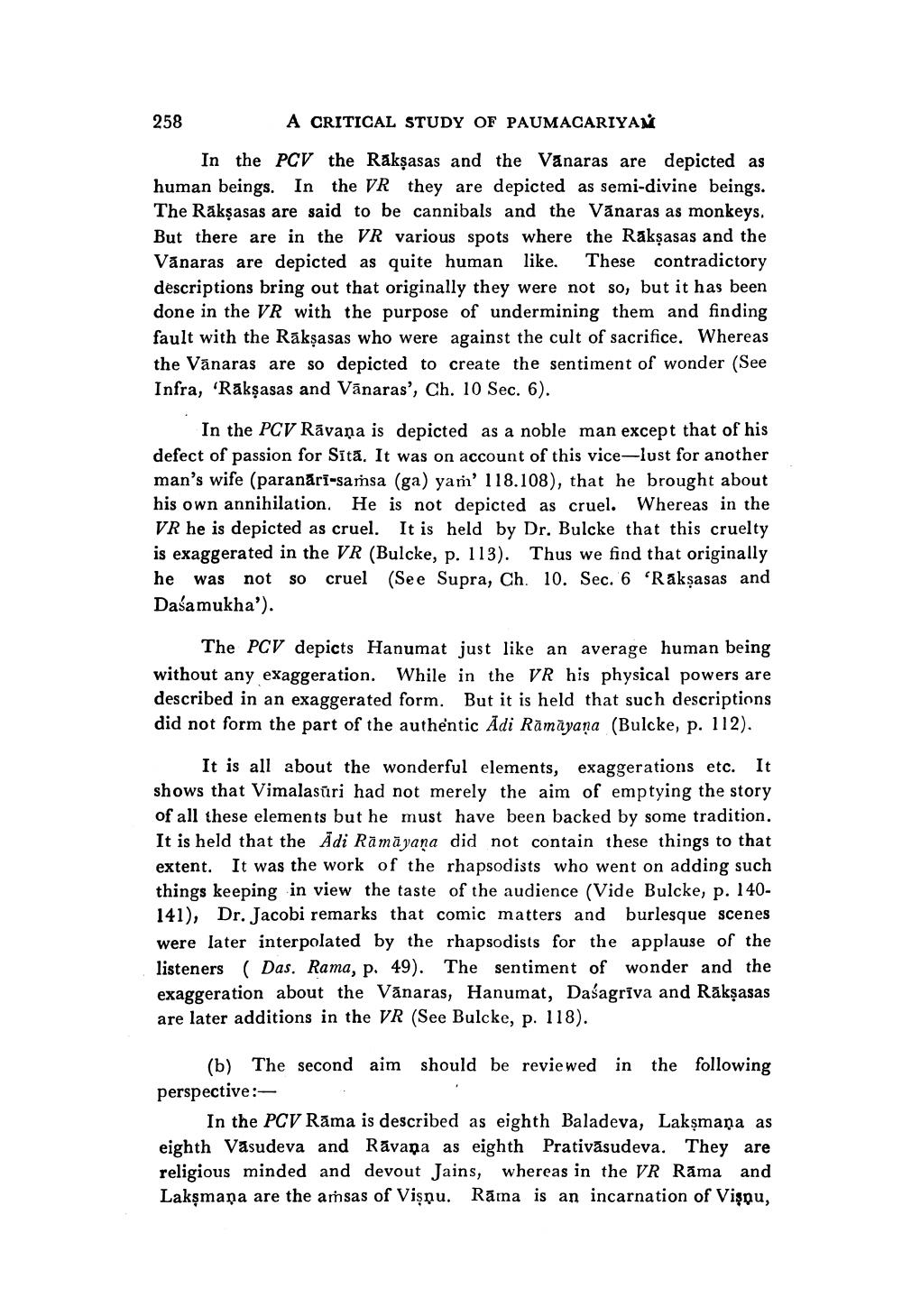________________
A CRITICAL STUDY OF PAUMACARIYAM
In the PCV the Rakṣasas and the Vanaras are depicted as human beings. In the VR they are depicted as semi-divine beings. The Rākṣasas are said to be cannibals and the Vanaras as monkeys. But there are in the VR various spots where the Rākṣasas and the Vanaras are depicted as quite human like. These contradictory descriptions bring out that originally they were not so, but it has been done in the VR with the purpose of undermining them and finding fault with the Rākṣasas who were against the cult of sacrifice. Whereas the Vanaras are so depicted to create the sentiment of wonder (See Infra, 'Rākṣasas and Vanaras', Ch. 10 Sec. 6).
258
In the PCV Rāvana is depicted as a noble man except that of his defect of passion for Sītā. It was on account of this vice-lust for another man's wife (paranarī-saṁsa (ga) yam' 118.108), that he brought about his own annihilation. He is not depicted as cruel. Whereas in the VR he is depicted as cruel. It is held by Dr. Bulcke that this cruelty is exaggerated in the VR (Bulcke, p. 113). Thus we find that originally he was not so cruel (See Supra, Ch. 10. Sec. 6 'Rakṣasas and Daśamukha').
The PCV depicts Hanumat just like an average human being without any exaggeration. While in the VR his physical powers are described in an exaggerated form. But it is held that such descriptions did not form the part of the authentic Adi Ramayana (Bulcke, p. 112).
It is all about the wonderful elements, exaggerations etc. It shows that Vimalasuri had not merely the aim of emptying the story of all these elements but he must have been backed by some tradition. It is held that the Adi Ramayana did not contain these things to that extent. It was the work of the rhapsodists who went on adding such things keeping in view the taste of the audience (Vide Bulcke, p. 140141), Dr. Jacobi remarks that comic matters and burlesque scenes were later interpolated by the rhapsodists for the applause of the listeners (Das. Rama, p. 49). The sentiment of wonder and the exaggeration about the Vanaras, Hanumat, Daśagrīva and Rākṣasas are later additions in the VR (See Bulcke, p. 118).
(b) The second aim should be reviewed in the following perspective:
In the PCV Rama is described as eighth Baladeva, Lakṣmaṇa as eighth Vasudeva and Rāvaņa as eighth Prativasudeva. They are religious minded and devout Jains, whereas in the VR Rāma and Lakṣmaṇa are the amsas of Visņu. Rāma is an incarnation of Visņu,




